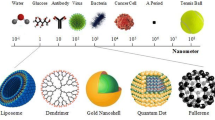Summary
Melanin obtained from Aureobasidium pullulans and Cladosporium resinae was an efficient biosorbent for copper. Copper uptake could be expressed using various adsorption isotherms; melanin from A. pullulans obeyed Freundlich and Langmuir isotherms whereas C. resinae melanin followed the BET isotherm indicating a more complex type of adsorption than in A. pullulans. In general, uptake capacities of melanin were greater than for intact biomass and the higher uptake by pigmented rather than albino biomass could be correlated with the presence of melanin. Cu2+ was less readily desorbed from melanin by dilute mineral acids than from intact biomass and again, the relative ease of Cu2+ desorption from pre-loaded pigmented or albino biomass was correlated with the presence or absence of melanin. Mg2+ and Zn2+ appeared to be the most effective cations for desorption with Na+ and K+ the least effective. The addition of melanin to a coppercontaining culture of the albino strain of A. pullulans resulted in some reduction of toxicity.
Similar content being viewed by others
References
Bell AA, Wheeler MH (1986) Biosynthesis and functions of fungal melanins. Ann Rev. Phytopathol 24:411–451
Brierley CL, Kelly DP, Seal KJ, Best DJ (1985) Materials and biotechnology. In: Higgins IJ, Best DJ, Jones J (eds) Biotechnology Blackwell, Oxford, pp 163–212
Bruenger FW, Stover BJ, Atherton DR (1967) The incorporation of various metal ions into in vivo- and in vitro-produced melanin. Radiation Res 32:1–21
Brunauer S, Emmett PH, Teller E (1938) Adsorption of gases in multimolecular layers. J Amer Chem Soc 60:309–319
De Rome L, Gadd GM (1987) Copper adsorption by Rhizopus arrhizus, Cladosporium resinae and Penicillium italicum. Appl Microbiol Biotechnol 26:84–90
Duddridge JE, Wainwright M (1980) Heavy metal accumulation by aquatic fungi and reduction in viability of Gammarus pulex fed Cd2+ contaminated mycelium. Wat Res 14:1605–1611
Freundlich H (1926) Colloid and capillary chemistry, Methuen, London
Froncisz W, Sarna T, Hyde JS (1980) Cu2+ probe of metal-ion binding sites in melanin using electron paramagnetic resonance spectroscopy. Arch Biochem Biophys 202:289–303
Gadd GM (1980) Melanin production and differentiation in batch cultures of the polymorphic fungus Aureobasidium pullulans. FEMS Microbiol Lett 9:237–240
Gadd GM (1984) Effect of copper on Aureobasidium pullulans in solid medium: adaptation not necessary for tolerant behaviour. Trans Br Mycol Soc 82:546–549
Gadd GM (1986) The uptake of heavy metals by fungi and yeasts: the chemistry and physiology of the process and applications for biotechnology. In: Eccles H, Hunt S (eds) Immobilisation of ions by bio-sorption. Ellis Horwood Ltd, Chichester, pp 135–147
Gadd GM (1989) Fungi and yeasts for metal accumulation. In: Brierley CL, Brierley JA, Ehrlich HL (eds) Microbial mineral recovery. Macmillan, New York (in press)
Gadd GM, Griffiths AJ (1978) Microorganisms and heavy metal toxicity. Microbial Ecol 4:303–317
Gadd GM, Griffiths AJ (1980) Effect of copper on morphology of Aureobasidium pullulans. Trans Br Mycol Soc 74:387–392
Gadd GM, Mowll JL (1985) Copper uptake by yeast-like cells, hyphae and chlamydospores of Aureobasidium pullulans. Exp Mycol 9:230–240
Kunin R (1958) Ion exchange resins (2nd edn), Wiley, New York
Langmuir I (1918) The adsorption of gases on plane surfaces of glass, mica, and platinum. J Amer Chem Soc 40:1361–1403
Larsson B, Tjalve H (1978) Studies on the melanin-affinity of metal ions. Acta Physiol Scand 104:479–484
Montgomery JM (1985) Adsorption. In: Montgomery JM (ed) Water treatment principles and design. Wiley, New York, pp 174–197
Mowll JL, Gadd GM (1984) Cadmium uptake by Aureobasidium pullulans. J Gen Microbiol 130:279–284
Saiz-Jimenez C, Shafizadeh F (1984) Iron and copper binding by fungal phenolic polymers: an electron spin resonance study. Curr Microbiol 10:281–286
Sarna T, Froncisz W, Hyde JS (1980) Cu2+ probe of metal-ion binding sites in melanin using electron paramagnetic resonance spectroscopy II. Natural melanin. Arch Biochem Biophys 202:304–313
Shumate SE, Strandberg GW (1985) Accumulation of metals by microbial cells. In: Moo-Young M, Robinson CN, Howell JA (eds) Comprehensive Biotechnology, Vol 4, Pergamon Press, New York, pp 235–247
Tobin JM, Cooper DG, Neufeld RJ (1984) Uptake of metal ions by Rhizopus arrhizus biomass. Appl Env Microbiol 47:821–824
Tsezos M, Volesky B (1981) Biosorption of uranium and thorium. Biotechnol Bioeng 23:583–604
Tuovinen OH, Kelly DP (1974) Use of microorganisms for the recovery of metals. Int Metall Revs 19:21–31
Wainwright M, Grayston SJ, de Jong P (1986) Adsorption of insoluble compounds by mycelium of the fungus Mucor flavus. Enzyme Microb Technol 8:597–600
Weber WJ (1972) Adsorption. In: Weber WJ (ed) Physicochemical processes for water quality control. Wiley, New York, pp 199–259
Zunino H, Martin JP (1977) Metal binding by organic macromolecules in soil. I. Hypothesis interpreting the role of soil organic matter in the translocation of metal ions from rocks to biological systems. Soil Sci 123:65–76
Author information
Authors and Affiliations
Rights and permissions
About this article
Cite this article
Gadd, G.M., de Rome, L. Biosorption of copper by fungal melanin. Appl Microbiol Biotechnol 29, 610–617 (1988). https://doi.org/10.1007/BF00260993
Received:
Accepted:
Published:
Issue Date:
DOI: https://doi.org/10.1007/BF00260993




